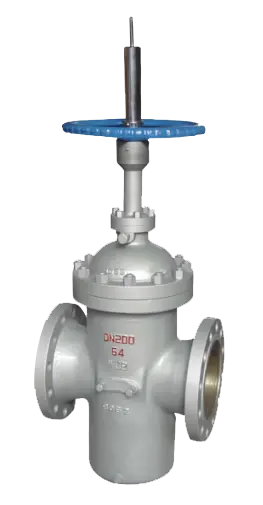As essential components in industrial piping systems, the performance and reliability of parallel gate valves heavily rely on regular maintenance and servicing. Proper upkeep not only extends the valve's lifespan but also ensures safety and stability during operation.

1. Regular Inspection and Preventive Maintenance
To guarantee the effective operation of parallel gate valves, routine inspections are crucial. Key areas to focus on include:
Sealing Performance Inspection
Verify the integrity of the valve's sealing performance, ensuring no leakage exists between the gate and the seat. Seal failures often arise from wear or deposits on the sealing surfaces.
Operation Smoothness Inspection
Regularly check the valve stem and transmission mechanism for proper functioning. The gate plates should move smoothly without any jamming. If jamming occurs, consider lubricating the valve stem or removing any debris.
Corrosion and Wear Inspection
Examine the valve's exterior and interior for signs of corrosion or wear, especially when handling corrosive media. Such issues can compromise both the structural integrity and sealing performance.
2. Daily Maintenance Practices
Regular Lubrication
Lubricate the valve stem and drive components frequently, particularly in applications involving frequent operation. Choose lubricants that are anti-corrosive and waterproof to suit the working environment.
Clean Sealing Surfaces
Ensure the sealing surfaces are free from wear or deposits caused by impurities in the media, as these can diminish sealing performance. Regular cleaning of the valve interior is essential.
Prevent Thermal Shock
Avoid sudden temperature changes, particularly with high-temperature or low-temperature media, to prevent damage to the valve body or sealing materials. Gradually adjust the system temperature before operating the valve.
External Protection
For valves installed outdoors or in harsh conditions, implement protective measures like applying anti-corrosive paint or adding protective covers to shield the valve from environmental damage.
3. Common Faults and Solutions
Even with diligent maintenance, parallel gate valves may encounter common faults over time. Addressing these issues promptly can minimize downtime:
Valve Sealing Failure
If leaks occur due to inadequate sealing, inspect the gate and seat for wear. Close the valve and replace or repair the sealing surfaces if necessary.
Valve Stem Jamming
Uneven operation of the valve stem may indicate insufficient lubrication or debris accumulation. Clean the stem and apply lubricant. Persistent jamming may require disassembling the valve for further inspection.
Incomplete Opening or Closing
If the valve fails to fully open or close, it may be obstructed by foreign objects or jammed between the gate and seat. Shut down the system and disassemble the valve for thorough cleaning and inspection.
4. Maintenance for Long-term Disuse
For valves that may remain inactive for extended periods, follow these maintenance measures to ensure proper operation upon reactivation:
Regular Manual Operation
Periodically open and close the valve to prevent internal components from seizing or rusting due to inactivity.
Protective Storage
If the valve will be unused for a long time, seal it to protect against humidity or corrosive environments. Cover the exterior with a protective cap and inject anti-rust oil into the interior.
5. Repair and Replacement Recommendations
Certain components of parallel gate valves, such as sealing surfaces, valve stems, and gates, are particularly prone to wear. Their lifespan depends on usage frequency and operating conditions, so pay close attention to their condition during inspections:
Sealing Surface Repair
If wear is detected but not severe, repair the sealing surface through grinding or machining rather than replacing the entire valve.
Component Replacement
Promptly replace worn or deformed major components like the valve stem or valve plate to avoid affecting system operation. For critical applications, consider keeping a stock of vulnerable components on hand to minimize downtime.
Next: Can You Overheat A Ball Valve?
Previous: Introduction to Parallel Gate Valves
